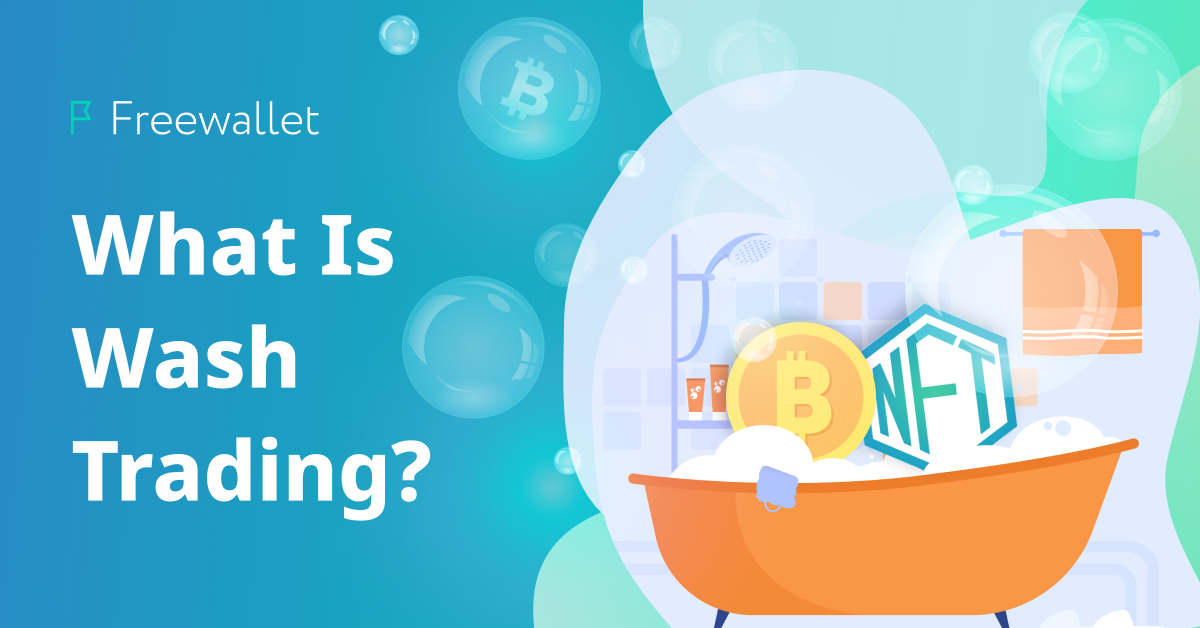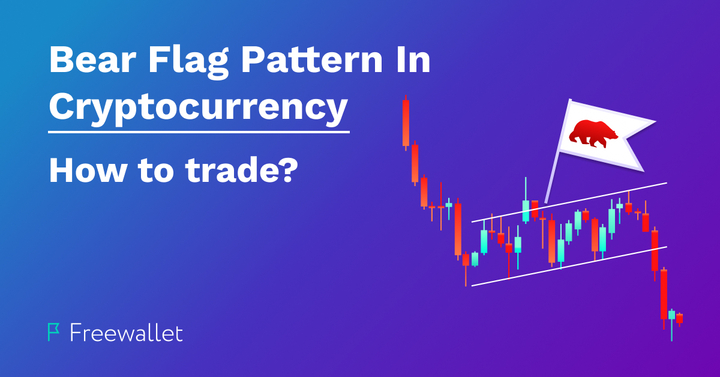
Cryptocurrencies created multiple opportunities to make money. You can earn via mining, staking, trading, yield farming, hodling, etc. But let’s not forget that many people earn crypto coins through fraud, stealing, and other malicious activity. This article will tell about the market manipulation strategy called wash trading. This strategy emerged long before Bitcoin’s creation, but scammers frequently use it on crypto exchanges. One can only imagine at what scale wash trading is used. Reportedly, over half of the BTC trades are actually fake. According to Bloomberg, 95% of all NFT trading volume is a product of wash trading.
Read this article in its entirety to learn what wash trading is, what specifics of wash trading on the crypto market are, the legal status of this strategy, and other crucial information.
What Is Wash Trading?
The idea of wash trading is not hard to grasp. In fact, it is quite a primitive price manipulation strategy. Wash trading is a trade operation in which the buyer and seller are the same entity (person or an organized group of people). The trades are made to create an illusion that the asset in question is more popular than it actually is. It attracts genuine investors who later trade an artificially hyped asset at a higher price. In the US, such practice is banned in traditional markets. However, in the crypto market, wash trading is alive and well.
The scheme is relatively safe for wash traders. When traders want a certain asset to go up, they buy this coin from themselves, effectively switching money between two or more wallets owned by them. And they do it multiple times. They keep their funds, but the asset shows a strong activity attracting other investors who come and buy in. It boosts the price, and at some point, wash traders just dump their loads of this asset for a colossal price and walk away. The wallets in wash trading can even belong to a single person. You can notice that wash traders only spend money on transaction fees. It’s understood that such a trade type is very contentious for the market. It’s sucking out the wealth from fair investors.
Apart from manipulating prices, wash trading is used to exaggerate the trading volume rates of crypto exchanges. Higher liquidity attracts more traders, meaning the exchange will make more money from trading fees. More than that, many exchanges offer privileges for high-volume trading users. Users of these exchanges do wash trading to get these perks.
Wash Trading vs. Market Making
Wash trading is far from authentic market making. The very basis of the market is the relationship between supply and demand. When these stats are faked or artificially boosted, the market players face a distorted picture. Making correct decisions in such circumstances is much more complicated than in the normal market, where prices are the product of natural trading, not manipulative transactions.
Wash trading set out by exchanges to pump their liquidity rates is also far from regular market-making. Instead of finding themselves on the exchange with active trading, users will face low natural liquidity and will have lower control over the trading process. The outcome is profit loss.
It is effectively impossible to trade without genuine information about the trends in the market. If you trust in the misleading prices stats that occurred as a result of wash trading, you will barely make any money. Telling actual volumes from boosted ones is a challenging task. Even experienced traders can fall victim to wash trading. Automated trading can also get ruined on the markets manipulated by bad actors.
Wash Trading and Cryptocurrencies
The cryptocurrency sector is a comfort zone for modern wash traders. For some time, wash trading wasn’t that prominent in the info field, but cryptocurrencies have opened a new season for price manipulation. It’s all because cryptocurrencies can help frauds avoid responsibility for their actions. There are two factors for that. First off, cryptocurrencies and DeFi projects offer multiple ways to obscure one’s identity. The second factor is the legal uncertainty over the wash trading in cryptocurrency.
The decentralized nature of the blockchain industry and some platforms’ anonymity make it harder to identify bad actors participating in wash trading. The fact that crypto is in the gray zone in terms of laws makes it difficult to prosecute wash traders as it is not always clear which type of authorities is responsible for controlling the crypto markets and related crimes.
On NFT markets, wash trading is even more dangerous. Many NFTs don’t have a trading volume at all. So when someone conducts a series of back-and-forth trades of an NFT, some rookie NFT hunters might think this token is a worthy investment. After purchasing it at an inadequate price, this investor will find out that no one wants to buy this NFT, as all the previous buyers were actually the same person or a group of people.
An Example of Wash Trading
Now, let’s look at the vivid example of NFT wash trading. On October 28, 2021, an NFT called Punk 9998 from a famous collection of CryptoPink was sold for over 124k ETH. In the USD equivalent, this trade was worth over 530 million.
We know about this trade thanks to a CryptoPunks Twitter bot that automatically posts tweets about the sales of NTFs from the series. Soon, it became clear that the trade was bogus. The Etherscan check revealed that Punk 9998 was bought for money from the flash loan smart contract, and the loan was repaid shortly after. Some assumed that it looked like a clear act of money laundering. Others stated that it was rather made for fun. Actually, this “punk” became one of the most valuable pieces of art in history. Price manipulation? Probably. But it doesn’t seem that anyone has bought Punk 9998 after the infamous trade.
Is Wash Trading Legal?
Although wash trading has been banned in the USA for almost a century, this ban is yet to be effective for crypto markets. As law-wise, cryptocurrencies are still in the gray area. Frauds keep on abusing the market. Yet, we can’t call cryptocurrency wash trading illegal. Of course, wash trading itself is beyond the law. But the lack of the legal status of cryptocurrencies makes this ban less effective. It is not clear who should control this area and sort out the wash traders.
Are crypto coins commodities, or rather are they securities? Deciding on this would have made the crypto market control easier. Regulators haven’t yet come up with effective laws over cryptocurrencies as they strive to protect investors without sacrificing the future development of the blockchain sector.
The Bottom Line
Wash trading poisons the crypto markets. This harmful practice is one of the reasons why people wait for crypto regulators to step in (although the attitude towards regulation in the crypto community is ambivalent). Wash trading exists in the crypto sector because of several factors. It’s hard to tell if wash trading takes place, it is easy to conduct it, and the last reason is that in many countries, the crypto markets are not regulated well enough to fight wash trading adequately. All these factors combined make wash trading one of the vilest problems for crypto traders.
You should be aware of it and always do due diligence before you invest in any crypto. Check if the price behavior of this coin of your interest is more or less the same on different exchanges. Do your best to tell authentic stats from bogus trades made by frauds. If you detect suspicious patterns, it’s always better to find a different coin to invest in. Thankfully, the market always has hundreds of decent replacements. Losing your money wasn’t your goal when you decided to try investing in crypto, right?
Related
Stay tuned
Subscribe for weekly updates from our blog. Promise you will not get emails any more often.
Most Popular
New Posts
Stay tuned
Subscribe for weekly updates from our blog. Promise you will not get emails any more often.






